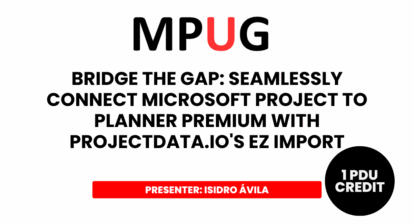 The benefits of the cloud are hard to deny. For those in a Project Management Office (PMO), though, the thought of having to migrate Project and Portfolio Management (PPM) data from an on-premises solution is overwhelming. The PMO can’t afford to stop operations indefinitely, utilizing a “trial and error” approach to migrate its data. But, it also can’t afford to miss the opportunities – as well as the cost savings – that having PPM in the cloud would present.
The benefits of the cloud are hard to deny. For those in a Project Management Office (PMO), though, the thought of having to migrate Project and Portfolio Management (PPM) data from an on-premises solution is overwhelming. The PMO can’t afford to stop operations indefinitely, utilizing a “trial and error” approach to migrate its data. But, it also can’t afford to miss the opportunities – as well as the cost savings – that having PPM in the cloud would present.
The Planning and Design Phase is Crucial
Many organizations jump into migrations too quickly, keeping everything the same for the sake of expediency. While their migration might run smoothly, they end up with the same old PPM tactics – and problems – in a cloud solution that offers enhanced capabilities.
To ensure that a migration is quick and efficient, there are 5 things that need to be done:
- Plan wisely. The planning and design phase should take you longer than the actual migration itself. The more you prepared you are, the better the outcome will be.
- Acknowledge that changes are needed. If management – or your company’s vision – has changed since your last migration, your PPM procedures probably need to be updated, too.
- Incorporate new functionality now. Integrate new features and components into your design, instead of waiting until the solution is up and running. Adjustments in the design phase are less expensive than those implemented while the system is live.
- Make tough choices. Now is the time to evaluate your PPM processes. Do you really need third-party systems, customization, or add-ons? See what your new cloud solution has to offer, and where you can streamline operations.
- Learn from your past mistakes. Obstacles, bottlenecks, and past migration issues must be taken into consideration during the planning phase. You don’t want to migrate problems and bad practices.
Learn more about the value of PPM in the Cloud Successfully Migrating to Project Online, in the on-demand webinar, presented by Rob Hirschman.
The Effort is Worth It
All the time, energy, and resources you spend will be worth it once you have successfully migrated your PPM data to a cost-efficient, scalable cloud solution. If you do it right, you will have best practices in place to improve your PPM techniques and keep your portfolio aligned with business goals.
If you do it right, it will also be the last migration that you will ever have to do!
Related Content
Webinars (watch for free now!):
Updating Projects Progress with Microsoft Project
Understanding the Microsoft PPM Public Power BI Content Pack
Articles:
Beyond the 2017 PMI® PMO Symposium®: Inspiration from the Postal Service
Five Tips for Building your Organization’s Methodology
Using Local Calendars in the PPM Platform






Bruce Geiser
Good summary. We are in the middle of a migration right now and I’d suggest a 6th tip. Find a proven integration partner and contract with them to guide you through the project. Most PMO’s are not staffed with the skillset and tools needed for a migration compared to normal maintenance.